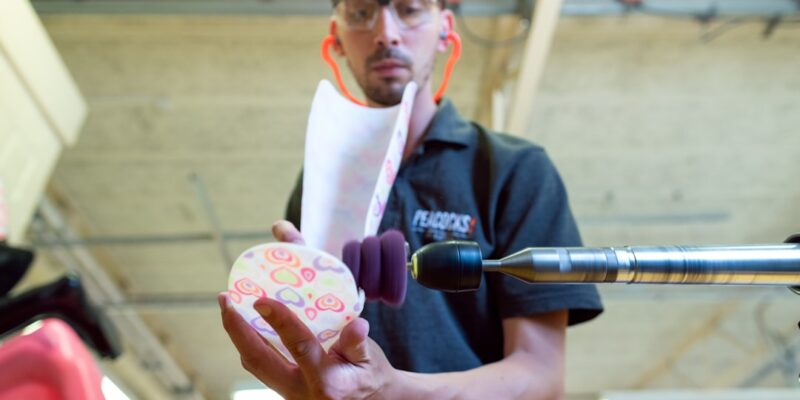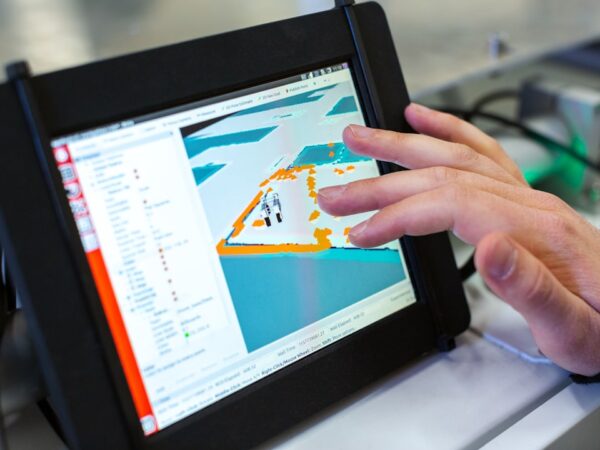
The Ultimate Guide to DTF Printing: Top 5 RIP Software for Flawless Results
DTF printing, or Direct to Film printing, is a relatively new technology that has gained popularity in the printing industry. It involves printing designs directly onto a special film, which is then transferred onto the desired substrate using heat and pressure. This method offers several benefits over traditional printing methods, such as screen printing or direct-to-garment printing.
One of the main advantages of DTF printing is its versatility. It can be used to print on a wide range of materials, including cotton, polyester, nylon, and even leather. This makes it an ideal choice for businesses that offer custom printing services or produce a variety of products.
To achieve high-quality prints with DTF printing, it is essential to use RIP software. RIP stands for Raster Image Processor, and it plays a crucial role in the printing process. RIP software converts digital images into printable files by processing the image data and optimizing it for the specific printer and substrate being used.
Key Takeaways
- DTF printing is a new technology that allows for high-quality printing on a variety of materials.
- Choosing the right RIP software is crucial for achieving optimal print quality and efficiency.
- The top 5 RIP software for DTF printing offer a range of features and benefits, including color management and workflow automation.
- Installing and setting up RIP software for DTF printing requires attention to detail and following manufacturer instructions.
- Optimizing print quality with RIP software involves adjusting settings such as ink density and resolution.
Importance of Choosing the Right RIP Software for DTF Printing
The choice of RIP software can have a significant impact on the quality and efficiency of DTF printing. The right software can enhance print quality, improve color accuracy, and increase productivity. On the other hand, using subpar RIP software can result in poor print quality, wasted materials, and increased production time.
When choosing RIP software for DTF printing, there are several factors to consider. Firstly, compatibility with your printer is crucial. Not all RIP software is compatible with all printers, so it is essential to ensure that the software you choose works seamlessly with your specific printer model.
Another important factor to consider is the level of control and customization offered by the software. Different RIP software packages offer varying levels of control over color management, ink usage, and other settings. It is important to choose software that allows you to fine-tune these settings to achieve optimal results.
Top 5 RIP Software for DTF Printing: Features and Benefits
1. Wasatch SoftRIP: Wasatch SoftRIP is a popular choice among DTF printers due to its advanced color management capabilities. It offers precise control over color profiles, ink limits, and dot gain compensation, allowing users to achieve accurate and vibrant prints. Additionally, SoftRIP supports a wide range of printers and offers excellent compatibility with various file formats.
2. ErgoSoft RIP: ErgoSoft RIP is known for its user-friendly interface and powerful features. It offers advanced color management tools, including spot color matching and ink saving options. ErgoSoft RIP also provides excellent control over halftone settings, allowing users to achieve smooth gradients and sharp details in their prints.
3. ONYX RIP: ONYX RIP is a comprehensive software solution that offers a wide range of features for DTF printing. It provides advanced color management tools, including ICC profiling and spot color matching. ONYX RIP also offers automated workflows and job nesting capabilities, which can significantly improve productivity and reduce material waste.
4. Caldera RIP: Caldera RIP is a versatile software solution that supports both DTF printing and other printing technologies, such as sublimation and UV printing. It offers advanced color management tools, including ICC profiling and ink limiting options. Caldera RIP also provides powerful nesting capabilities, allowing users to optimize their print layouts for maximum efficiency.
5. Fiery XF: Fiery XF is a popular choice among professional DTF printers due to its robust feature set and excellent color management capabilities. It offers advanced color profiling tools, including support for custom ICC profiles and spot color matching. Fiery XF also provides automated workflows and job nesting capabilities, making it an ideal choice for high-volume production environments.
How to Install and Set Up RIP Software for DTF Printing
| Step | Description |
|---|---|
| Step 1 | Download the RIP software from the manufacturer’s website. |
| Step 2 | Install the RIP software on your computer. |
| Step 3 | Connect your DTF printer to your computer. |
| Step 4 | Open the RIP software and select your DTF printer. |
| Step 5 | Load your design into the RIP software. |
| Step 6 | Adjust the settings in the RIP software to optimize your print. |
| Step 7 | Send the print job to your DTF printer. |
| Step 8 | Wait for the print to finish and then transfer the design onto your substrate. |
Installing and setting up RIP software for DTF printing can be a straightforward process if you follow the correct steps. Here is a step-by-step guide to help you get started:
1. Choose the right RIP software for your printer model and operating system. Ensure that the software is compatible with your printer and meets your specific requirements.
2. Download the software from the manufacturer’s website or install it from the provided installation media.
3. Follow the on-screen instructions to install the software on your computer. Make sure to select the correct options and settings during the installation process.
4. Once the software is installed, launch it and configure the settings according to your printer and substrate. This may include selecting the correct printer model, setting up color profiles, and adjusting ink limits.
5. Connect your printer to your computer using a USB cable or network connection. Ensure that the printer is turned on and recognized by the RIP software.
6. Load the DTF film into your printer according to the manufacturer’s instructions. Make sure that the film is properly aligned and secured in place.
7. Open your desired image file in the RIP software and adjust any necessary settings, such as size, resolution, and color correction.
8. Send the print job to your printer through the RIP software. Monitor the printing process to ensure that everything is running smoothly.
9. Once the print job is complete, carefully remove the DTF film from the printer and transfer it onto your desired substrate using heat and pressure.
Tips for Optimizing Print Quality with RIP Software
To achieve optimal print quality with RIP software for DTF printing, it is essential to follow best practices and make use of available tools and features. Here are some tips to help you optimize print quality:
1. Use high-quality images: Start with high-resolution images that are suitable for printing. Low-resolution images can result in pixelation and loss of detail in the final print.
2. Calibrate your monitor: Ensure that your monitor is properly calibrated to display accurate colors. This will help you make more informed color adjustments in the RIP software.
3. Use color management tools: Take advantage of the color management tools offered by the RIP software. Use ICC profiles to ensure accurate color reproduction and spot color matching for precise color matching.
4. Adjust ink limits: Experiment with different ink limits to achieve the desired level of saturation and vibrancy in your prints. Be mindful of ink usage to avoid excessive ink consumption and potential issues with drying and curing.
5. Optimize halftone settings: Fine-tune the halftone settings in the RIP software to achieve smooth gradients and sharp details in your prints. Experiment with different halftone methods, such as diffusion dithering or error diffusion, to find the best results for your specific needs.
6. Perform regular maintenance: Keep your printer and RIP software up to date with the latest firmware and software updates. Regularly clean and maintain your printer to ensure optimal performance and print quality.
Troubleshooting Common Issues with RIP Software for DTF Printing

Despite following best practices, issues may still arise when using RIP software for DTF printing. Here are some common issues and their possible solutions:
1. Color mismatch: If the colors in your prints do not match the original image, check your color management settings in the RIP software. Ensure that you are using the correct ICC profiles and spot color matching options.
2. Banding or streaking: If you notice banding or streaking in your prints, it may be due to incorrect halftone settings or clogged printheads. Adjust the halftone settings in the RIP software or perform a printhead cleaning to resolve the issue.
3. Poor ink adhesion: If the ink does not adhere properly to the substrate, it may be due to incorrect curing or insufficient heat and pressure during transfer. Adjust the curing settings in the RIP software or increase the heat and pressure during transfer.
4. Print artifacts: If you notice unwanted artifacts, such as jagged lines or pixelation, in your prints, it may be due to low-resolution images or incorrect image scaling. Use high-resolution images and ensure that the image is scaled correctly in the RIP software.
5. Slow printing speed: If your prints are taking longer than expected, check your printer settings in the RIP software. Ensure that you are using the correct print mode and adjust any necessary settings to improve printing speed.
Comparison of RIP Software for DTF Printing: Pros and Cons
Here is a detailed comparison of the top 5 RIP software for DTF printing, highlighting their pros and cons:
1. Wasatch SoftRIP:
– Pros: Advanced color management capabilities, excellent compatibility with various printers, support for a wide range of file formats.
– Cons: Relatively high cost compared to other options, may have a steeper learning curve for beginners.
2. ErgoSoft RIP:
– Pros: User-friendly interface, powerful color management tools, excellent control over halftone settings.
– Cons: Limited compatibility with certain printer models, may lack some advanced features offered by other software.
3. ONYX RIP:
– Pros: Comprehensive feature set, advanced color management tools, automated workflows and job nesting capabilities.
– Cons: Relatively high cost compared to other options, may require additional training to fully utilize all features.
4. Caldera RIP:
– Pros: Versatile software solution, support for multiple printing technologies, powerful nesting capabilities.
– Cons: Limited compatibility with certain printer models, may lack some advanced color management features.
5. Fiery XF:
– Pros: Robust feature set, excellent color management capabilities, automated workflows and job nesting capabilities.
– Cons: Relatively high cost compared to other options, may require additional training to fully utilize all features.
How to Choose the Best RIP Software for Your DTF Printing Needs
When choosing the best RIP software for your DTF printing needs, it is important to consider several factors:
1. Compatibility: Ensure that the software is compatible with your specific printer model and operating system. Check the manufacturer’s website or contact their support team for compatibility information.
2. Features and capabilities: Evaluate the features and capabilities offered by the software. Consider your specific requirements, such as color management, workflow automation, and job nesting capabilities, and choose software that meets those needs.
3. Ease of use: Consider the user-friendliness of the software. If you are a beginner or have limited experience with RIP software, choose a solution that offers a user-friendly interface and provides adequate documentation and support.
4. Cost: Consider your budget and compare the cost of different software options. Keep in mind that higher-priced software may offer more advanced features and better support, but it may not be necessary for all users.
5. Support and training: Evaluate the level of support and training offered by the software manufacturer. Look for options that provide comprehensive documentation, online tutorials, and responsive customer support.
By considering these factors and evaluating your specific needs, you can make an informed decision and choose the best RIP software for your DTF printing needs.
Advanced Techniques for DTF Printing with RIP Software
Once you have mastered the basics of DTF printing with RIP software, you can start experimenting with advanced techniques to achieve unique effects. Here are some tips to help you push the limits of DTF printing:
1. Layering: Experiment with layering multiple prints on top of each other to create depth and texture in your designs. Use transparent inks or adjust the opacity settings in the RIP software to achieve different effects.
2. Special effects: Explore the special effects options offered by the RIP software, such as embossing, metallic inks, or varnish. These effects can add a unique touch to your prints and make them stand out.
3. Custom color profiles: Create custom ICC profiles for specific substrates or ink combinations to achieve accurate color reproduction. Use color calibration tools and spectrophotometers to fine-tune your profiles and ensure consistent results.
4. Variable data printing: Take advantage of variable data printing capabilities offered by the RIP software. This allows you to personalize each print with unique text, images, or other data, opening up new possibilities for customization.
5. Experimentation: Don’t be afraid to experiment and try new techniques. DTF printing with RIP software offers a wide range of possibilities, so take the time to explore different settings, effects, and materials to discover what works best for your specific needs.
Future of DTF Printing and RIP Software: Trends and Innovations
The future of DTF printing and RIP software is promising, with several emerging trends and innovations shaping the industry. Here are some key trends to watch out for:
1. Improved color accuracy: As technology advances, we can expect to see further improvements in color accuracy and consistency in DTF printing. Manufacturers are investing in research and development to develop better color management tools and more accurate ink formulations.
2. Faster printing speeds: With advancements in printhead technology and RIP software optimization, we can expect to see faster printing speeds in the future. This will enable higher productivity and shorter turnaround times for DTF printers.
3. Integration with e-commerce platforms: As online custom printing services continue to grow in popularity, we can expect to see tighter integration between DTF printing software and e-commerce platforms. This will streamline the ordering process and enable seamless communication between customers, printers, and fulfillment centers.
4. Automation and artificial intelligence: Automation and artificial intelligence technologies are likely to play a significant role in the future of DTF printing. We can expect to see more advanced workflow automation, predictive maintenance, and intelligent color management systems that can optimize print quality and efficiency.
5. Sustainable practices: With increasing awareness of environmental issues, the printing industry is moving towards more sustainable practices. We can expect to see advancements in eco-friendly inks, recycling programs for consumables, and energy-efficient printing technologies.
In conclusion, DTF printing with RIP software offers a versatile and efficient solution for custom printing needs. By choosing the right RIP software, following best practices, and experimenting with advanced techniques, you can achieve high-quality prints and stay ahead of the competition in the ever-evolving printing industry.
FAQs
What is DTF printing?
DTF printing is a new printing technology that uses a special type of ink that can be printed on a variety of fabrics, including cotton, polyester, and blends.
What is RIP software?
RIP software stands for Raster Image Processor software. It is a software that converts digital images into printable formats for printing on various media.
What is the best RIP software for DTF printing?
The best RIP software for DTF printing depends on various factors such as the printer model, the type of fabric, and the desired print quality. Some popular RIP software for DTF printing include Wasatch SoftRIP, AccuRIP, and Onyx RIP.
What are the features to look for in a RIP software for DTF printing?
Some essential features to look for in a RIP software for DTF printing include color management, halftone settings, ink density control, and compatibility with various printer models.
Can I use any RIP software for DTF printing?
No, not all RIP software is compatible with DTF printing. It is essential to choose a RIP software that is specifically designed for DTF printing to ensure optimal print quality and color accuracy.
Is RIP software necessary for DTF printing?
Yes, RIP software is necessary for DTF printing as it helps to convert digital images into printable formats and ensures accurate color reproduction and print quality.













